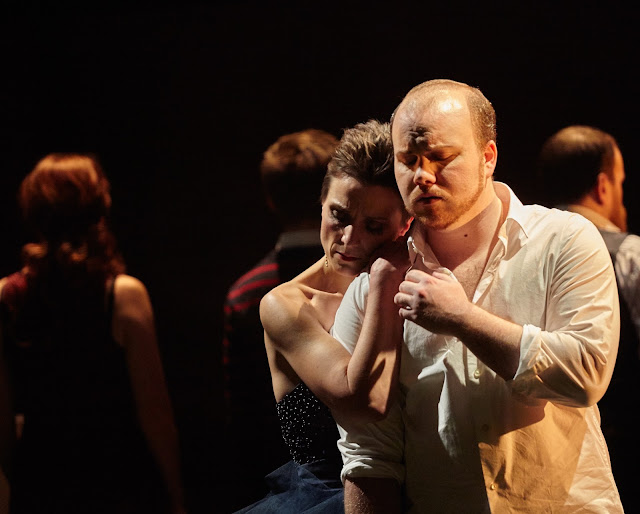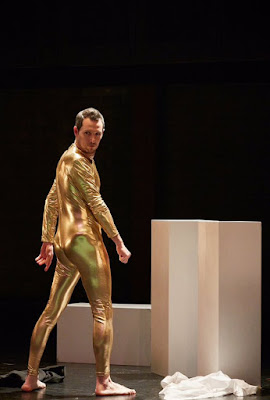| photo via my Instagram |
At this time last year, I was laid up on a sofa, tissues at the ready, sick with the flu. My mother had gone to a nearby friend’s for the New Year’s Eve countdown, with my assurance that was fine to leave me alone; I just needed rest and relaxation, and there was nothing further she could do past the jello-making and soup-heating and tea-freshening she’d been doing for twenty-four hours.
Wrapping herself in a thick, woolly, vintage Hudson’s Bay coat, a jaunty hat, and chunky knitted scarf, she sauntered down the snowy street around 8pm, returning just after midnight, eyes watering from the cold, but her face flushed with happiness.
“I had three glasses of wine!” she marveled.
It seems incredible, thinking back on that night, how physically strong she was, how capable I was, even with the flu, and how much 2015, as it rolled further and further along, took out of us both.
There’s a belief that hardships are sent to teach us something — about ourselves, about our attitudes; we endure them as a means of hardening our survival instincts and honing our notions of identity. It’s true, I’m grateful for the lessons each year has brought me, but no year has taught me more, on so many levels and in so many ways. No year has made me more cynical and yet more curious, more angry and yet more accepting, more honest and yet more aware of the drive to deceive and the great, frightening need some have to throw a theatrical, rosy cover across motive, intention, behaviour, and character. 2015: harsh, painful, important. I’m glad it’s over.
Realizing many of my local relationships aren’t as true as I thought has been a good thing, but it’s also been a painful lesson. I’m grateful to the good souls who call to check on me, who take time to visit or meet up despite poor weather and busy schedules, who don’t make excuses but make time. I’m equally grateful to the far-off people who send good wishes via social media, who follow my updates and share my work —they’re people who engage, interact, actively encourage and communicate; they take the initiative to stay in touch. They get it. Expressions of support and basic concern over the course of this horrendous year, many from quarters I hadn’t expected, were, and remain, very moving. It’s meaningful to know there are people out there listening and watching, who take the time and energy to stay in touch despite busy lives and schedules.
| photo via my Instagram |
Of course, nothing beats an in-person conversation. Taking the initiative to gently, lovingly pull me out of the cave of grief I frequently (and often unconsciously) retreat into is something I cherish, and to be perfectly frank, I wish it happened more often. In years past, I would always be the one planning, producing, pulling people together. I stopped doing that in 2015; illness and death left me too exhausted and grief-stricken. When the realization recently hit that the only holiday party I attended this year was the one I threw myself, I became both troubled and curious; should I work on being more popular? Should I find an outside job? Ought I to subscribe to the hegemony of coupledom? What about me needed to change? Then I realized, as I have so often throughout 2015, that some people — many people — are, in fact, self-involved assholes. There’s no getting around that harsh, if unfortunately true, fact.
Good moments from 2015 happened in direct relation with, or as a direct result of, my work. Teaching in the early part of this year was one of the best professional experiences of my life; being around students with an abundance of energy, curiosity, and so many incredible stories and passions was a life-enriching thing, and I am greatly looking forward to returning to it. Deeply satisfying writing and reporting opportunities blossomed with CBC, Hyperallergic, Opera News and Opera Canada magazines, as well as the Toronto Symphony. Likewise, many of the best conversations, connections, and concentrations happened in and around, or because of, music and art. Good people and great moments came into my life because of shared passions. Such happenings were like shooting stars: bright, magical, brief. That is, perhaps, all they were meant to be, but their memory is beautiful, a work of art, something I go to and stare at in mute wonder.
Wonder is what shimmers around my favorite cultural things from 2015. I generally dislike “Best of/Worst of” year-end lists — to use one of my mother’s old phrases, it’s no fun looking up a dead horse’s ass — but there are certain moments that stick out: the thick, heavy lines of Basquiat’s paintings, bass baritone Philip Addis’ expression as he leaned, Brando-like, against the set of Pyramus and Thisbe, Daphne Odjig’s bright, vital colors, the way soprano Kristin Szabo and bass-baritone Stephen Hegedus looked at each other in Death and Desire, Carrol Anne Curry’s laugh. I don’t want to get too trite and say “art saved my life this year,” but, in many ways, working in and around culture, sometimes through very harsh conditions and circumstances, was the best kind of therapy. My mother worked for as long as she could; it gave her a sense of accomplishment, pride in a job well and thoroughly done. Work for her was, I realize, a necessary distraction through the horrible illnesses she faced in her fifteen years of her cancer. More than a distraction, work was a kind of beacon of security, even when the nature of the work wasn’t entirely secure; the nature of the work, and the feeling it gave her, were. I get that.
| photo via my Instagram |
And so, as 2016 dawns, I’m tempted to want for more: more art, more magic, more satisfying work. But as 2015 so succinctly taught me, you can’t plan for pain; you can only ride its high waves, and hope, when you get sucked under, you don’t swallow too much salt water. I didn’t emerge from that sea a tinfoil mermaid; I emerged battered, bruised, with an injured foot and a sore heart. I don’t feel strong as 2015 comes to a close; I feel different. I’m more suspicious of peoples’ motives, less tolerant of bullshit. I love my work, and the possibilities it affords. There are places I want to travel, people I want to meet, things I want to see. I wish for more sincerity. Such a desire isn’t on a timetable, unfolding precisely over the course of one year, but I suspect that it helps to stay curious, critical, controlled in reactions and devoid of drama.
2016: less assholes, more authenticity. It’s a start.













